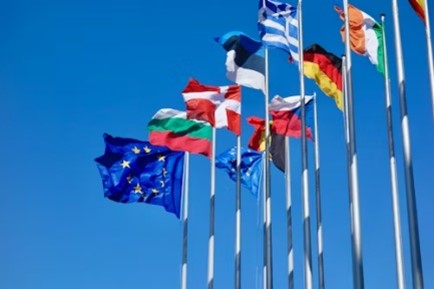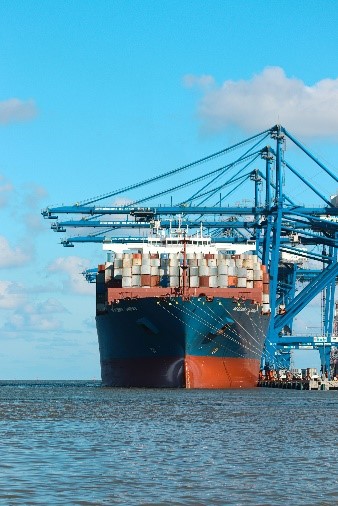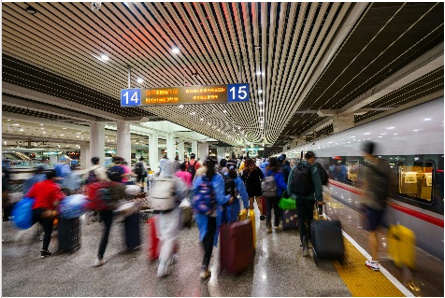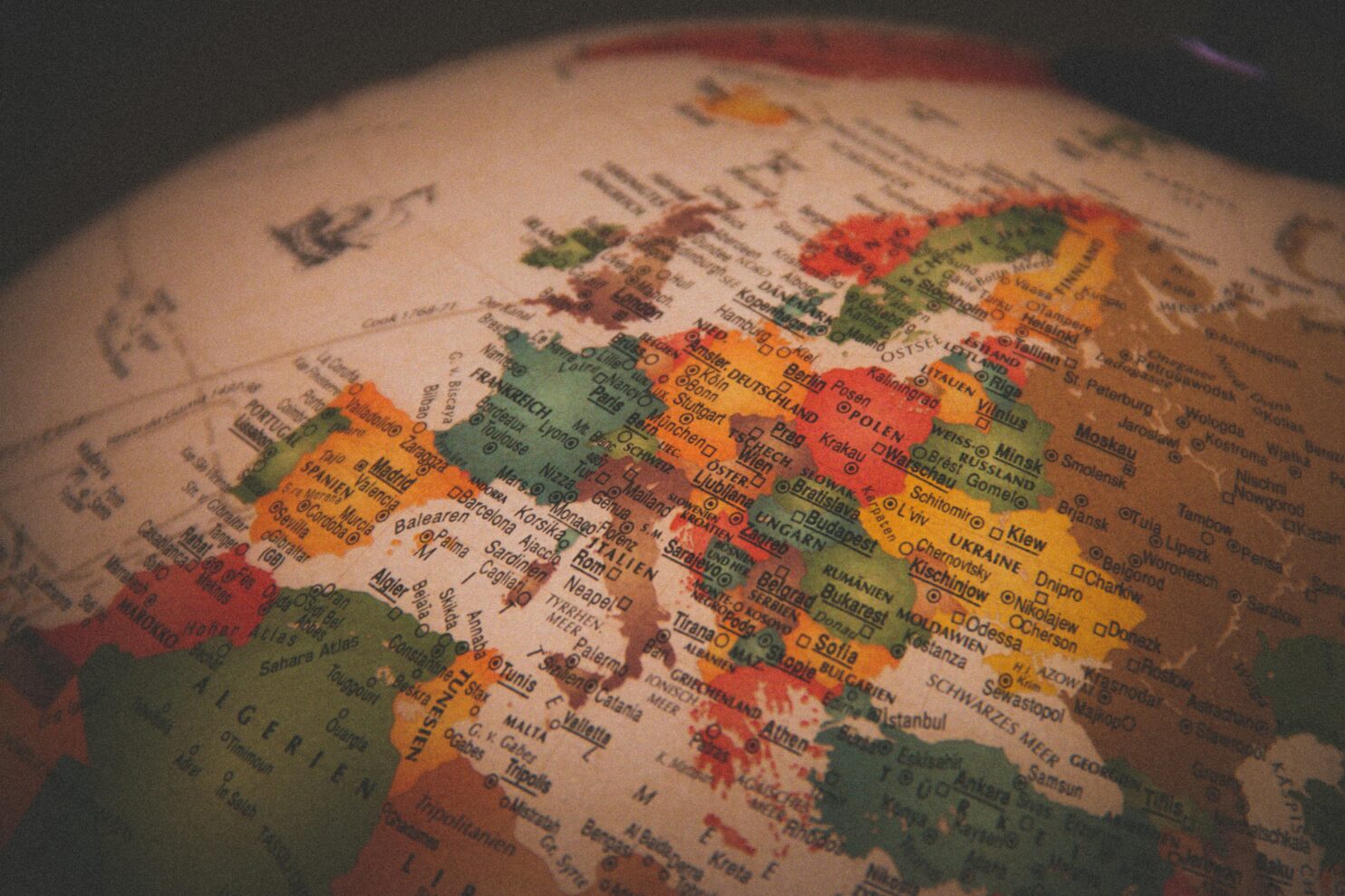Listen to the blog here:
Have you ever wondered why European initiatives look so different from the American approach to sustainability? A fundamental answer is geopolitics. This is the study of how politics, economics, and geography interact to influence national policy, providing extra context behind foreign policy decisions.
Geopolitics helps us to understand the limitations and areas of opportunity for fashion businesses regarding sustainability. Let’s break down some geopolitical factors as they relate to sustainability in apparel and identify what we need to do in the future.
Geopolitical Influence on Fashion Sustainability Regulations
 Geopolitics deeply shapes the laws that impact our world, and a country’s legislative actions are key to improving sustainability. Around the globe, regulations vary widely: in some places, strict laws support sustainable practices, while in others, lax regulations lead to less eco-friendly outcomes. Both the U.S. and the EU, despite their differences, play a huge role in guiding global fashion businesses toward a more sustainable future for both our industry and our planet.
Geopolitics deeply shapes the laws that impact our world, and a country’s legislative actions are key to improving sustainability. Around the globe, regulations vary widely: in some places, strict laws support sustainable practices, while in others, lax regulations lead to less eco-friendly outcomes. Both the U.S. and the EU, despite their differences, play a huge role in guiding global fashion businesses toward a more sustainable future for both our industry and our planet.
In the U.S., the drive for sustainability is partly fueled by a desire to outpace China in the ongoing trade competition. Some environmental regulatory measures include the Clean Air Act, Clean Water Act, and Resource Conservation and Recovery Act. These all allow the EPA (Environmental Protection Agency) to establish standards to drive American companies to improve their environmental impact.
Meanwhile, the European Union is stepping up with new regulations to address the fashion industry’s environmental impacts. Two complimentary pieces of legislation recently enacted in the EU are the Corporate Sustainability Reporting Directive and the Corporate Sustainability Due Diligence Directive, which prioritize transparency and accountability to drive fashion companies to wisely manage their social and environmental impacts on sustainability.
Trade Policies and Their Effect on Sustainable Sourcing in Fashion
 When trade policies, tariffs, or barriers come into play, they can really shake things up for a country’s geopolitical stability and sustainable sourcing efforts. Take the U.S.-China trade war, for instance. This ongoing conflict has made it tougher and more expensive to import goods from China. One clear example is the U.S. ban on cotton from the Xinjiang region, which has forced the fashion industry to demand fabrics that can be traced back to their source. Some cotton farms have even started offering detailed traceability down to the bushel to meet this demand.
When trade policies, tariffs, or barriers come into play, they can really shake things up for a country’s geopolitical stability and sustainable sourcing efforts. Take the U.S.-China trade war, for instance. This ongoing conflict has made it tougher and more expensive to import goods from China. One clear example is the U.S. ban on cotton from the Xinjiang region, which has forced the fashion industry to demand fabrics that can be traced back to their source. Some cotton farms have even started offering detailed traceability down to the bushel to meet this demand.
Geopolitical tensions like these can throw a wrench into supply chains, pushing companies to look for new sources. The U.S. ban on Chinese cotton has led American apparel brands to seek out cotton from other places, changing where their products come from. A recent McKinsey survey from late 2023, which included 25 Chief Procurement Officers (CPOs) in the apparel industry, shows a clear shift in sourcing strategies. Collectively, these CPOs, who manage $110 billion in sourcing each year, have reduced their reliance on China, cutting its share from 30% to 22%. At the same time, they’ve ramped up sourcing from South Asia, increasing the region’s share from 23% to 34%. Many of them are planning to expand their sourcing in countries like Bangladesh, Vietnam, and India.
The Move from China to South Asia
 There is a noticeable trend of companies moving their production out of China to other South Asian countries or even closer to home through nearshoring. This shift is driven by rising labor costs in China, ongoing trade tensions, and the need for shorter, more reliable supply chains. However, nearshoring isn’t as simple as it might seem. While having production closer to home sounds great, especially with the promise of quicker turnaround times, it often comes with higher labor costs compared to traditional offshore options.
There is a noticeable trend of companies moving their production out of China to other South Asian countries or even closer to home through nearshoring. This shift is driven by rising labor costs in China, ongoing trade tensions, and the need for shorter, more reliable supply chains. However, nearshoring isn’t as simple as it might seem. While having production closer to home sounds great, especially with the promise of quicker turnaround times, it often comes with higher labor costs compared to traditional offshore options.
Additionally, building new relationships with suppliers in these nearshoring locations can be tricky since they may not be as established as those in more traditional hubs. Finding skilled workers in these new areas can also be a challenge, potentially impacting productivity. On top of that, companies must navigate different regulatory environments and deal with the logistics of cross-border coordination, which can add extra costs and cause delays. While nearshoring has its benefits, it’s not a straightforward solution. It requires careful planning and strategy to make it work well in the apparel industry.
How Geopolitics and Media Shape Consumer Demands for Sustainable Fashion
 Like nearshoring, geopolitics requires careful planning and strategy to succeed. Trade policies, diplomatic ties, and economic conditions not only determine where products can be sold and at what price, but they also influence consumer behavior and values. As geopolitical events and environmental awareness evolve, consumers increasingly demand sustainable practices from the fashion industry, pushing brands to adapt quickly.
Like nearshoring, geopolitics requires careful planning and strategy to succeed. Trade policies, diplomatic ties, and economic conditions not only determine where products can be sold and at what price, but they also influence consumer behavior and values. As geopolitical events and environmental awareness evolve, consumers increasingly demand sustainable practices from the fashion industry, pushing brands to adapt quickly.
The U.S. and China trade war, for example, led brands like Levi’s and Patagonia to diversify their sustainable sourcing options in places like Vietnam and India. Brexit created pressure for British brands to align with EU sustainability standards, influencing them to invest more in eco-friendly materials. Media coverage also plays a crucial role; documentaries like “The True Cost” have shown the environmental damage caused by fast fashion, prompting brands like Adidas and Nike to roll out products made from recycled materials.
The Rana Plaza factory collapse in Bangladesh highlighted labor abuses, increasing demand for ethically produced clothing and benefiting brands like Eileen Fisher and Stella McCartney. In response, many companies are now setting ambitious goals for sustainability, innovating with products like 100% recyclable shoes, and being more transparent about their environmental impact. All these changes reflect the growing consumer desire for fashion that’s both ethical and eco-friendly.
Why Education is Key to Sustainable Apparel
 As more people become aware of the environmental and ethical impacts of fashion, there’s a growing demand for education on sustainability in fashion. Many of us want to make eco-friendly choices but struggle to identify truly sustainable products or understand the effects of our purchases. Gaining this knowledge helps us make better decisions and pushes brands toward greater transparency and responsibility. It’s also crucial for designers and industry professionals aiming to innovate with sustainable practices.
As more people become aware of the environmental and ethical impacts of fashion, there’s a growing demand for education on sustainability in fashion. Many of us want to make eco-friendly choices but struggle to identify truly sustainable products or understand the effects of our purchases. Gaining this knowledge helps us make better decisions and pushes brands toward greater transparency and responsibility. It’s also crucial for designers and industry professionals aiming to innovate with sustainable practices.
However, education alone isn’t enough. For sustainable fashion to truly make an impact, it needs to be more affordable and accessible. Currently, many eco-friendly options are pricey. A 2023 McKinsey & Company report found that while 53% of consumers are willing to pay more for sustainable products, this is only true if the price difference is manageable. To promote a sustainable future, we need eco-friendly fashion at various price points and more widespread availability.
Affordability is a significant challenge because eco-friendly material
s and ethical labor practices are more costly. Small-scale production, certifications, and research into sustainable methods all add to the expense. While sustainable fashion offers long-term value, the high upfront cost can be a barrier, especially for budget-conscious shoppers.
Access to Sustainable Materials
Fast fashion’s low prices and rapid production cycles create challenges for sustainable brands, making it tough for them to compete. To make sustainable fashion more accessible to the broader market, key products and industry leaders must step up and offer compelling alternatives. This requires not only innovation in design and materials but also scalability to reach a wider audience. Government incentives will be crucial in driving this shift, as they can provide the necessary support to level the playing field and encourage the adoption of sustainable practices on a larger scale.
Governments’ Role in Incentivizing Apparel Brands to Incorporate Sustainable Initiatives
 Besides educating the public and making sustainable apparel more affordable, governments must actively incentivize sustainable practices in the fashion industry. Government actions can drive positive change by offering tangible support to brands committed to sustainability. This can be done through comprehensive plans with clear timelines, measurable goals, and specific incentives like tax breaks, grants, or subsidies for eco-friendly practices.
Besides educating the public and making sustainable apparel more affordable, governments must actively incentivize sustainable practices in the fashion industry. Government actions can drive positive change by offering tangible support to brands committed to sustainability. This can be done through comprehensive plans with clear timelines, measurable goals, and specific incentives like tax breaks, grants, or subsidies for eco-friendly practices.
Additionally, by establishing partnerships with industry leaders, governments can help facilitate the transition to sustainable production methods, ensuring that these initiatives are both economically viable and widely adopted. This kind of coordinated effort would not only encourage more brands to prioritize sustainability but also set a global standard for responsible manufacturing practices.
Geopolitical Forces Driving Fashion Sustainability and the Road Ahead
As we have explored, geopolitics plays a significant role in shaping how different regions approach sustainability in the fashion industry. From regulatory legislation and trade policies to the influence of consumer awareness and media coverage, these factors all drive the fashion industry toward greener practices. Yet, while these changes are promising, they underscore the ongoing need for further progress.
Educating ourselves about sustainable fashion is vital, but it’s not enough. For real impact, sustainable apparel needs to be more affordable and accessible. With 53% of consumers willing to pay more for sustainable products if prices are reasonable, reducing costs and expanding availability are crucial.
Governments must also play a role by incentivizing sustainable initiatives, offering support through clear plans and incentives like tax breaks or subsidies. A collaborative effort between consumers, brands, and governments is essential for making sustainable apparel mainstream. Together, we can drive the fashion industry toward a more ethical and eco-friendly future, ensuring that sustainability becomes the norm rather than the exception.
Citation:
Basso, I. (2023, September 4). How geopolitics is transforming fashion and luxury. LINEAPELLE MAGAZINE – Beyond the fair, a world of ideas. https://magazine.lineapelle-fair.it/en/focus-en/how-geopolitics-is-transforming-fashion-and-luxury/#:~:text=Global%20geopolitics%20in%20this%20post-pandemic%20historical%20phase%20has,order%20to%20manage%20the%20continuity%20of%20their%20globalisation.
Giulio, M. (2024, May 14). Fashion law, sustainability and geopolitics: A non-obvious but concrete nexus. Fashion Law Journal. https://fashionlawjournal.com/fashion-law-sustainability-and-geopolitics-a-non-obvious-but-concrete-nexus/
Lu, S. (2024, June 10). Sustainability. New Report: Reimagining the Apparel Value Chain Amid Volatility. https://shenglufashion.com/tag/sustainability/
 Dustyn Barnett graduated from the University of Missouri-Columbia with a major in Textile and Apparel Management, a minor in Business, and a certification in Multicultural Studies. After graduating, Dustyn joined Stars Design Group and has gained experience in merchandising, marketing, and fabric development. He is a passionate advocate for sustainability in the fashion industry and consistently strives to integrate sustainable practices into his work.
Dustyn Barnett graduated from the University of Missouri-Columbia with a major in Textile and Apparel Management, a minor in Business, and a certification in Multicultural Studies. After graduating, Dustyn joined Stars Design Group and has gained experience in merchandising, marketing, and fabric development. He is a passionate advocate for sustainability in the fashion industry and consistently strives to integrate sustainable practices into his work.

